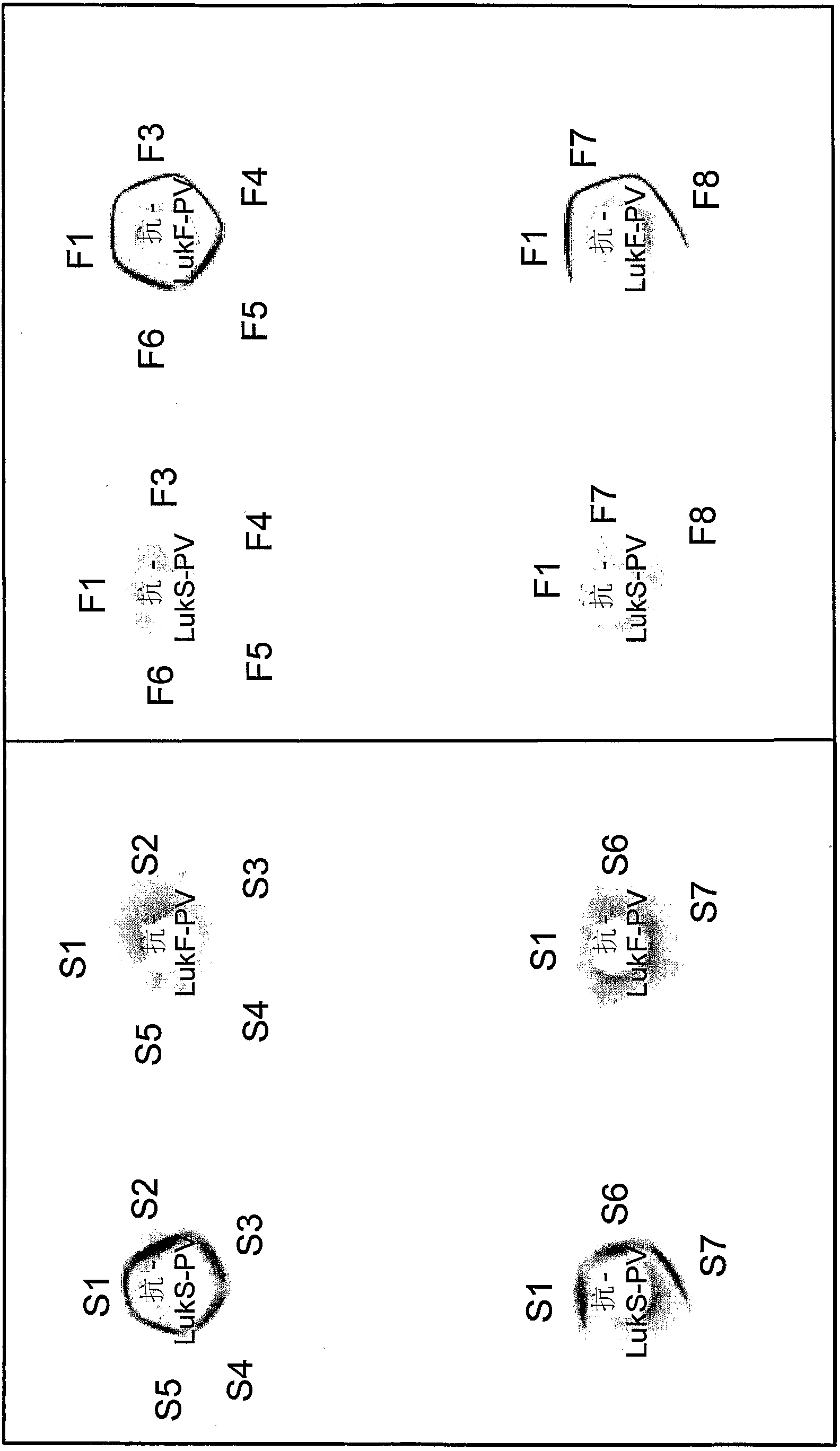Use of panton-valentine leukocidin for treating and preventing staphylococcus infections
A technology for staphylococcal infection and staphylococcus, applied in antibacterial drugs, immunoglobulins, antibody medical components, etc., can solve problems such as uncontrolled IVIG systemic immune regulation effects
- Summary
- Abstract
- Description
- Claims
- Application Information
AI Technical Summary
Problems solved by technology
Method used
Image
Examples
example 1
[0115] Example 1. Generation of rLukF-PV and rLukS-PV wild type clones
[0116]A strain of Staphylococcus aureus deposited from the ATCC under accession number 49775 (prototype of PVL producing high levels of PVL) was obtained by using a protocol according to the manufacturer (Promega) with minor modifications (addition of lysostaphin to the resuspension buffer) strains) to isolate genomic DNA.
[0117] The published PVL gene sequence (GenBank accession numbers X72700 and AB006796) was used to design oligonucleotide primers to classify the LukF-PV and LukS-PV genes, respectively. The forward primer was designed to eliminate a putative signal peptide and incorporate an Ncol site. The ATG at the Ncol site was designed to serve as an initiation codon for translation, avoiding the addition of the N-terminal amino acid encoded by the vector. The reverse primer was designed to incorporate a BamHI site just downstream of the stop codon. The luks-PV and lukf-PV genes were amplifi...
example 2
[0118] Example 2. Generation of rLukF-PV and rLukS-PV fusion protein clones
[0119] The PCR cloning technique was used to construct the PVL fusion protein, which is a human engineered protein encoded by the nucleotide sequence obtained by splicing together the lukf-PV and luks-PV genes. The PVL subunits were covalently linked by a short amino acid linker with the configuration rLukF-PV-aa linker-rLukS-PV or rLukS-PV-aa linker-rLukF-PV. This fusion protein is not cytotoxic because the two subunits cannot assemble and / or interact in the manner required to exhibit toxicity (eg, in the manner required for proper insertion into the leukocyte membrane). Fusion proteins are suitable for stimulating antibodies in the host to both subunits of PVL (eg, LukS-PV and LukF-PV) and to PVL toxin as a whole.
example 3
[0120] Example 3. Generation of rLukF-PV and rLukS-PV mutant clones
[0121] Using the protocol described by the manufacturer (Stratagene) and using pTrcHisBLukF-PV and / or pTrcHisBLukS-PV as templates, the following mutants were constructed using the QuickChange Mutagenesis Kit:
[0122] rLukF-PV mutants: ΔI124-S129; E191A; N173A; R197A; W176A and Y179A.
[0123] rLukS-PV mutants: ΔD1-I17; ΔF117-S122; T28D; T28F; T28N and T244A.
[0124] Those of ordinary skill in the art of genetics understand this nomenclature as standard terminology. That is, "ΔI124-S129" means a region deleted ("Δ") terminated by isoleucine at position 124 and terminated by serine at position 129 in the rLukF-PV mutant. Similarly, "ΔD1-I17" indicates that residues 1 (aspartic acid) to 17 (isoleucine) are missing in the rLukS-PV mutant. Likewise, the skilled artisan knows that "E191A" means that the glutamic acid at position 191 is replaced by alanine, and that "N173A" indicates that the rLukF-PV mutan...
PUM
 Login to View More
Login to View More Abstract
Description
Claims
Application Information
 Login to View More
Login to View More - R&D
- Intellectual Property
- Life Sciences
- Materials
- Tech Scout
- Unparalleled Data Quality
- Higher Quality Content
- 60% Fewer Hallucinations
Browse by: Latest US Patents, China's latest patents, Technical Efficacy Thesaurus, Application Domain, Technology Topic, Popular Technical Reports.
© 2025 PatSnap. All rights reserved.Legal|Privacy policy|Modern Slavery Act Transparency Statement|Sitemap|About US| Contact US: help@patsnap.com



